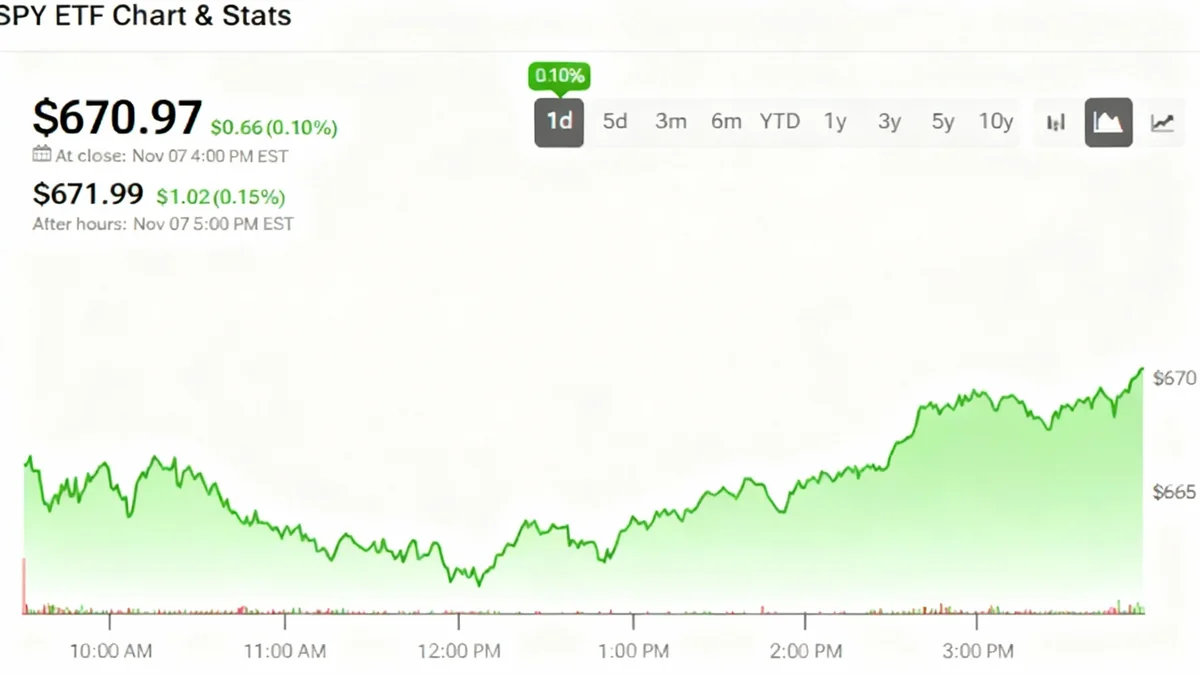Global oil prices increased on Wednesday, driven by a significant drop in crude inventories at a key U.S. storage facility and a disciplined production strategy from the OPEC+ alliance. The combination of tighter physical supply in the United States and controlled output from major producers has eased recent market concerns about a potential oversupply.
West Texas Intermediate (WTI) crude, the U.S. benchmark, saw its price rise by 1.44% to $62.62 per barrel. Brent crude, the international benchmark, experienced a similar increase of 1.42%, trading at $66.38 per barrel as of early Wednesday morning trading.
Key Takeaways
- Oil prices rose over 1.4% for both WTI and Brent benchmarks early Wednesday.
- A key factor was a 1.2 million barrel drop in crude stocks at Cushing, Oklahoma, a critical U.S. storage hub.
- Cushing inventories are at unusually low levels, increasing market sensitivity to supply disruptions.
- OPEC+ has maintained a strategy of modest monthly production increases, alleviating fears of a market glut.
- Market analysts suggest that until physical inventories show significant growth, the impact of planned production increases may be discounted.
Shrinking Inventories at Key US Hub
A primary driver behind the recent price surge is the declining level of crude oil stored at Cushing, Oklahoma. This location is not just any storage site; it serves as the physical delivery point for WTI crude oil futures contracts, making its inventory levels a critical indicator of physical market tightness in North America.
According to a report from the American Petroleum Institute (API) released on Tuesday, crude stockpiles in Cushing fell by 1.2 million barrels during the week ending October 3. This follows a trend of already low inventories at the hub.
Cushing Inventories at a Glance
Data from the U.S. Energy Information Administration (EIA) for the week ending September 26 showed Cushing inventories at just 23.467 million barrels. This figure is considered exceptionally low and heightens market vulnerability.
When storage levels are this thin, the market becomes more susceptible to regional supply disruptions. Any unexpected shift in pipeline flows or a sudden spike in demand can have an amplified effect on prices, leading to increased volatility. The latest draw reported by the API reinforces this narrative of a tightening physical market.
OPEC+ Production Discipline Eases Oversupply Fears
While U.S. inventory data provided immediate support for prices, the supply policies of the Organization of the Petroleum Exporting Countries and its allies, known as OPEC+, have provided a stable floor for the market. The group has been gradually returning production to the market after making deep cuts in 2020.
The alliance's decision to stick with modest, planned monthly production increases has helped calm fears of a potential supply glut that could overwhelm demand. This disciplined approach suggests that major producers are keen to avoid flooding the market and destabilizing prices.
Understanding OPEC+ Strategy
OPEC+ is a coalition of 23 oil-producing countries that coordinates on production levels to stabilize the global oil market. Their decisions on how much oil to pump have a direct and significant impact on global prices.
Production Challenges Within the Alliance
Furthermore, there is growing skepticism that the OPEC+ group can deliver on its headline production increase targets. Several member countries are facing significant operational and investment challenges that limit their ability to ramp up output.
Some nations are still compensating for previous periods of overproduction by keeping their current output constrained. Others, due to years of underinvestment or technical issues, simply lack the capacity to increase their production meaningfully. This reality means the actual amount of oil returning to the market is likely to be less than the officially stated figures, further tightening the global supply-demand balance.
Market Sentiment and Analyst Perspectives
The combination of low U.S. inventories and OPEC+ supply management is shaping trader sentiment. After a sell-off in the previous week, some of the recent price gains can be attributed to short-covering, where traders who had bet on falling prices buy back their positions to limit losses.
“The disconnect continues between paper pricing and the predicted glut in global balances. We are back to an oil trading world where flat price is firmly in the $65 to $70 world.”
This sentiment highlights a key market dynamic: while some forecasts predict a future supply surplus, the current physical market tells a different story. Traders are reacting to the immediate reality of tight supplies rather than long-term projections.
Analysts at ANZ bank noted that investors are likely to overlook the impact of future production increases until there are clear signs of the physical market softening. “Until the physical market shows signs of softening via rising inventories, investors are likely to discount the impact of the production increases,” the analysts commented on Wednesday.
Looking Ahead: Balancing Supply and Demand
The oil market is currently in a delicate balance. On one hand, rising production from OPEC+ and a potential increase in U.S. output, as recently upgraded by the EIA, point toward a more supplied market heading into 2026. These long-term forecasts are a source of caution for some investors.
On the other hand, the immediate data from Cushing and the operational constraints within OPEC+ paint a picture of a market that is tighter than many had anticipated. This tension between current physical tightness and future supply growth is expected to continue driving price movements.
Key factors to watch in the coming weeks will include:
- Official EIA Inventory Data: Confirmation of the API's report on Cushing stocks will be crucial for market direction.
- OPEC+ Compliance: Monitoring the actual production levels from member countries to see if they match their quotas.
- Demand Recovery: The strength of global economic recovery and its impact on oil consumption remains a critical variable.
For now, the focus remains squarely on the tangible evidence of shrinking stockpiles in the world's largest oil-consuming nation, providing solid support for crude prices in the near term.





